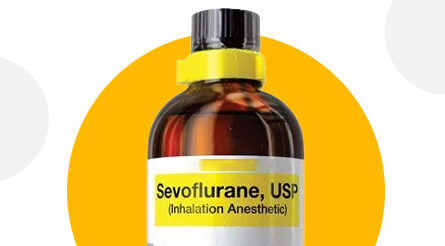Introduction to Disinfectant Sprayers
Disinfectant sprayers have become essential cleaning tools in the modern era. As germs and viruses continue to spread, these sprayers provide an effective way to remove harmful microbes from surfaces throughout the home and workplace. Different types of disinfectant sprayers use various mechanisms to apply chemical disinfectants, but they all serve the important purpose of destroying pathogens and creating safer environments.
Types of Disinfectant Sprayers
There are a few main types of disinfectant sprayers on the market:
Manual Spray Bottles
Manual spray bottles are the most basic type of Disinfectant Sprayer. They consist of a plastic bottle with a trigger sprayer nozzle. Users simply fill the bottle with a disinfecting solution and spray surfaces as needed. Though simple in design, manual spray bottles are effective for targeted spraying of small areas. They are inexpensive and portable for use anywhere in the home.
Battery-Powered Pump Sprayers
Battery-powered pump sprayers take disinfection to the next level with increased power and capacity. Rather than a manual pump, an electric pump powered by AA or D batteries drives the liquid up and out of the nozzle. This allows for continuous spraying without finger pumping. Tank sizes range from 16 to 32 ounces, covering more surface area on a single charge. Battery life spans multiple uses before replacement is needed.
Backpack Sprayers
For large-scale disinfecting jobs, backpack sprayers are a potent option. The sprayer system is mounted to an adjustable waist strap and back support frame, keeping hands free to focus on spraying. Gasoline or electric motor-driven pumps power nozzles that dispense at adjustable pressures. Tank capacities of 2.5 gallons or more allow for coverage of whole rooms without refilling. These heavy-duty sprayers are best for industrial and commercial applications.
Electrostatic Sprayers
An innovative type is the electrostatic sprayer. It applies a positive electric charge to disinfecting droplets as they leave the nozzle. This causes the liquid to wrap surfaces with a uniform coating that sticks tenaciously. Electrostatic technology boosts effectiveness by ensuring full coverage of even hard-to-reach nooks and crannies. It’s especially useful for disinfecting complicated equipment and facilities.
Important Considerations When Choosing a Disinfectant Sprayer
When selecting the best disinfectant sprayer for your needs, consider several factors:
– Surface area to be treated – Large or small areas impact sprayer size and power needs.
– Disinfecting solution being used – Some chemicals require specific sprayer materials for compatibility.
– Portability – Battery or backpack styles may be too heavy for some users or jobs.
– Budget – Costs vary greatly between simple and advanced sprayer technologies.
– Maintenance – Determine the ease of cleaning, replacing parts and upholding the sprayer.
Choosing the right type of disinfectant sprayer sets users up for effective, safe degerming of targeted areas. Doing research allows finding the best match based on unique cleaning goals and environmental conditions.
Using Disinfectant Sprayers Safely and Properly
Along with selecting the appropriate sprayer, it’s crucial to use the device safely and as directed. Here are some guidelines:
– Fill sprayers with proper disinfecting solutions, never with pure water.
– Wear personal protective gear like gloves and eye protection during spraying.
– Spray in a well-ventilated area and avoid breathing vapors.
– Saturate surfaces thoroughly and leave wet for the required contact time.
– Follow any safety instructions specific to the disinfectant being applied.
– Store sprayers out of reach of children and pets when not in use.
– Clean sprayers thoroughly after use to prevent bacterial growth.
– Replace parts as needed to ensure continuous optimal functionality.
Adhering to safe operation protocols helps disinfectant sprayers eliminate pathogens without introducing other health risks. Responsible use provides the hygienic benefits of these infection-busting tools.
Demonstrable Benefits of Disinfectant Sprayers
The justification for employing disinfectant sprayers lies in their proven results. Scientific evidence confirms that these germ-killing devices provide tangible health improvements:
– Studies show sprayers reduce microbe counts on treated surfaces by over 90% versus manual cleaning alone.
– Pathogenic bacteria like MRSA, E. coli and C. difficile plus viruses like norovirus and influenza have all been successfully eliminated via proper spraying.
– Healthcare centers credit sprayers with decreasing hospital-acquired infection rates up to 25% through enhanced environmental decontamination.
– Daycares that utilize sprayer disinfection experience significantly fewer illness outbreaks among children and staff.
– Disinfectant spraying as part of multidisciplinary cleaning protocols helps curb the spread of infectious diseases in various community settings.
With their verified power to remove disease-causing microbes, sprayers represent a worthwhile preventative investment. The hygienic assurances they provide translate to reduced sickness and associated medical costs.
As germ transmission keeps posing threats, disinfectant sprayers emerge as a frontline cleaning solution. Their application methods efficiently deliver chemical disinfectants where needed to destroy harmful pathogens. Different sprayer types suit various job scopes. Optimal selection plus careful usage uphold safety while delivering proven hygienic results. Overall, disinfectant sprayers earn their place among essential tools for establishing safer, healthier surroundings in a multitude of environments.




